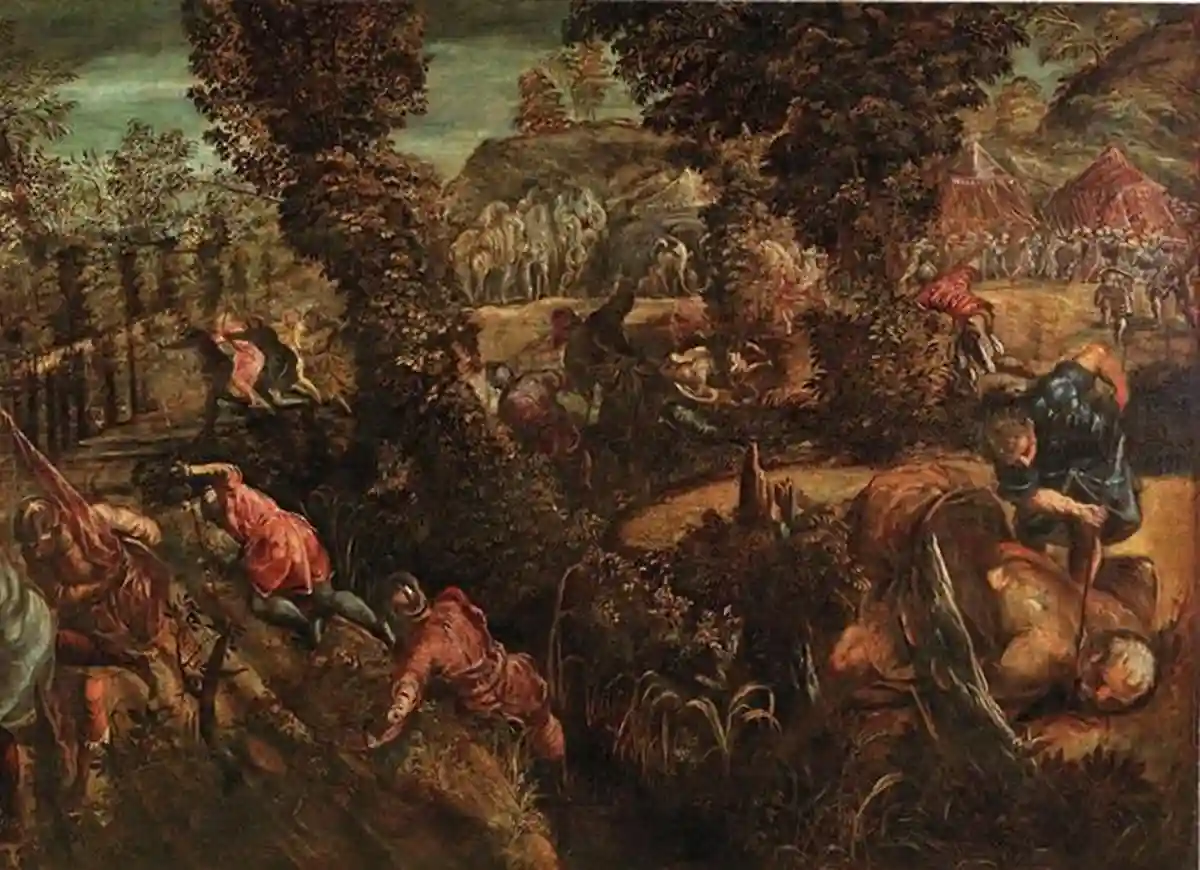The Wars Between Israelites and Philistines Explored – Ancient Palestine was the scene of many conflicts for many thousands of years. It was during the early times, during the Late Bronze Age and Early Iron Age, that battles were fought between the Philistines and the Israelites.
The majority of these conflicts are mentioned in the Bible. There is some evidence for their existence in independent sources like Assyrian archives. What do we know about the wars between the Israelites and the Philistines?
Samson’s battle with the Philistines
One famous character of the Bible was Samson. The Israelite was known for his strength because he promised God to leave his hair a long length and not cut it. The Bible Book of Judges recounts events from the 15th and 12th centuries BCE; Samson fought numerous fights with the Philistines. Samson is believed to have been alive during the period mentioned in the Book of Judges, placing his time between the 13th and 12th centuries.
Samson’s battles with the Philistines were unique ones. Because of his power, he didn’t require the support to assemble an army made up of Israelites. He was the only one to fight against large populations of Philistines. One of his most famous battles was when he seized an animal’s jawbone and used it to kill a thousand Philistine soldiers.
Samson is not mentioned in any other non-Biblical source dating back to early times. So, there is a debate among scholars about his authenticity. However, it is noteworthy that a seal that seems to depict a lion and a man has been discovered in ancient Israel.
It dates back to the 12th century BCE and was discovered near Samson’s native territory; because of the resemblance with the myth about Samson taking down a lion, certain scholars consider it to be proof that he existed as well as that the battles with the Philistines might have been accurate.
Also Read: Messiah Across Faiths: Exploring the Concept in Judaism, Christianity, and Islam
The Philistine Capture of the Ark of the Covenant
The most important encounter between the Philistines and the Israelites was towards the end of the 12th BCE. Based on written and archaeological evidence, we can conclude the existence of another period of Philistine arrivals in Palestine in the 12th century. It is possible that this was the cause of the subsequent increase in tensions between the Israelites and Philistines, which we read about in the Bible.
In the region that is Aphek and Ebenezer In the area of Aphek and Ebenezer, the Philistines massacred four thousand Israelites. Archaeologists have also discovered Philistine pottery in Aphek (modern-day Tel Afek). The pottery is from the Early Iron Age. Archaeologists have also discovered what is believed to be an Israelite village right next to Aphek. It was destroyed in 1050 BCE. While the dates may not precisely match, this layer of destruction could reference that Biblical battle.
The Israelites responded by bringing the holy Ark of the Covenant to the battleground. It was an enormous backfire. Thousands of Israelites were killed di, and the Philistines took the Ark. They held it for seven years before the Israelites finally got it.
Goliath the Philistine
In the 12th century In the 12th century, the Israelites were a monarchy with King Saul supreme over them. The Philistines had become highly dominant over the Israelites at this point. After Saul became King, he began to wage war against them. At first, Saul was very successful. But Saul was one of many to be successful. Philistines were still a powerful presence in the region.
After Saul’s first victory, the Philistines took their army to battle the Israelites in the Valley of Elah. To match the tradition of their Aegean origins, they selected an armed warrior to fight in single combat against the greatest Israelite warrior. It was the Philistine soldier named Goliath.
A famous teenager named David was brave enough to confront Goliath. He used his sling to hit Goliath on the forehead with the stone. The Israelites followed the fledgling Philistines, returning to their home territory along the coast. Saul and David continued to fight the Philistines throughout the years that followed.
Incredibly, archaeologists discovered an inscribed piece found in an inscription from the Philistine town of Gath, which was the residence of Goliath and dates to circa 1000 BCE. The inscription, dubbed”the Tell es-Safi inscription, contains two personal names. The letters are spelt “LWT” and “WLT” (this type of writing doesn’t use vowels). Numerous scholars have suggested a link with this particular Goliath inscription written as GLYT on the Bible.
Hezekiah’s War Against the Philistines
The Israelites had a sporadic war against the Philistines throughout the centuries. According to the relevant Biblical records, the final battle between the two nations took place during the reign of King Hezekiah. The King was Mightya, a well-known King of the Two-Tribe Kingdom of Judah in the 8th century BCE. The Bible details his reign, and he is mentioned in Assyrian reports.
In the Bible Book of Isaiah, there is a prophecy dating back to the year of the demise of King Ahaz Hezekiah’s father. It was an alert to the Philistines that revenge was on the way. In the narrative of the life of Hezekiah in the Bible, the Bible states that he defeated the Philistines in Gaza as well as its territories from watchtowers to the fortified city.’
It is interesting to note that additional biblical support exists for the war between the Israelites and the Philistines. The annals of the ancient King Sennacherib of Assyria confirm that the Philistines were under the control of Hezekiah. According to these sources, the inhabitants of Ekron, the city of Ekron, which was a Philistine city, gave their King, Padi, and his King, Padi, to Hezekiah.
Hezekiah kept King Padi in prison until King Sennacherib forced Hezekiah to let him go during the battle for Jerusalem. This is the conclusion of the direct war in the conflict between the Israelites as well as the Philistines.








